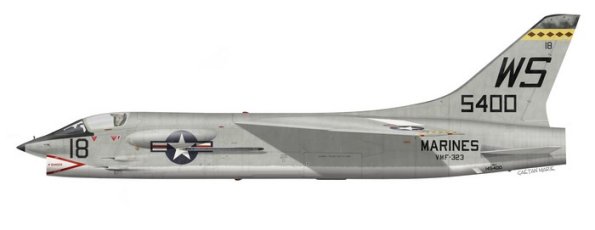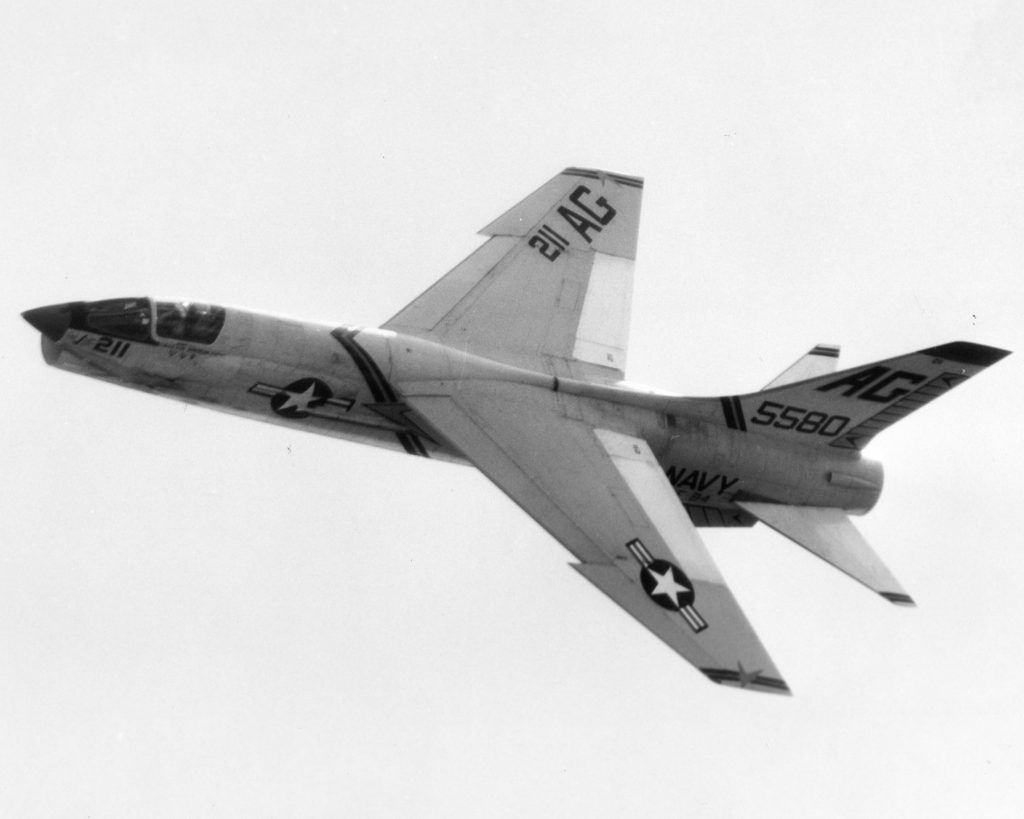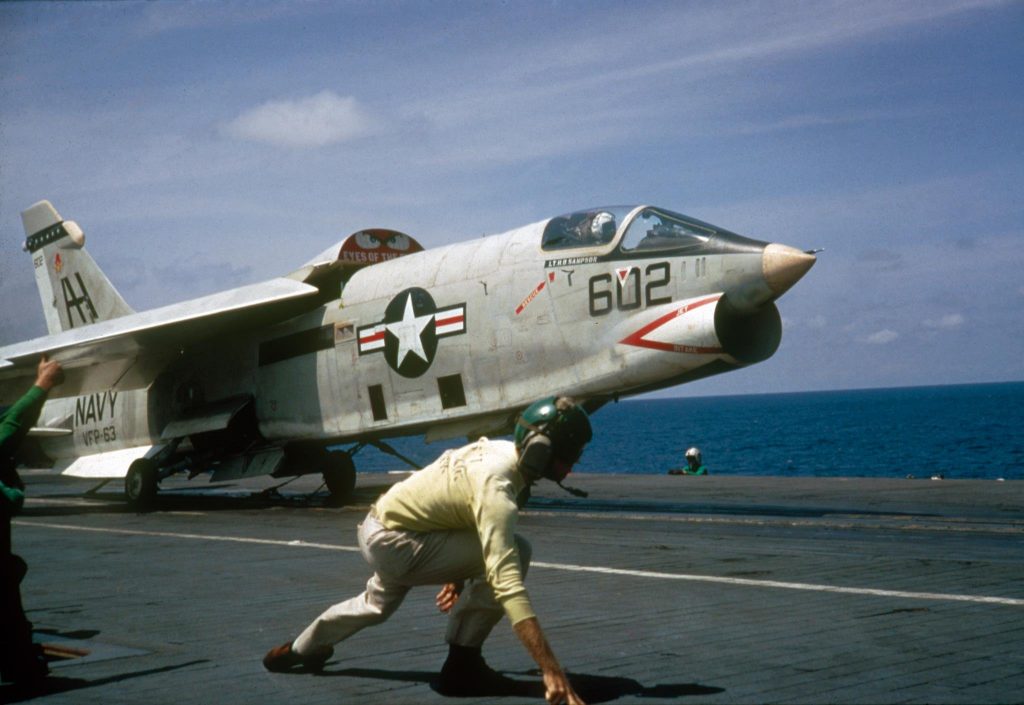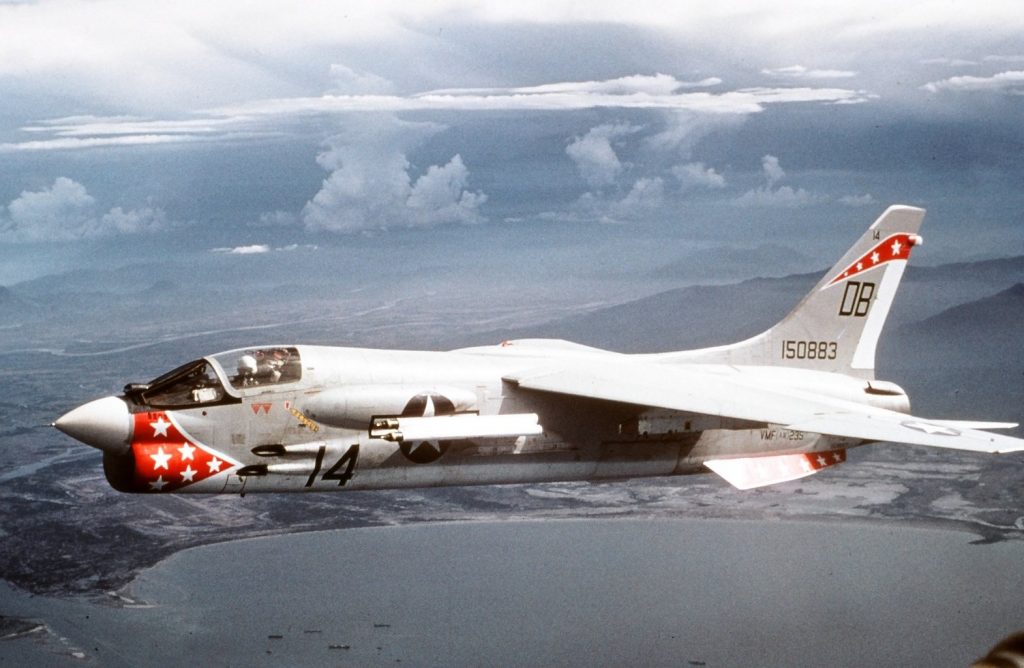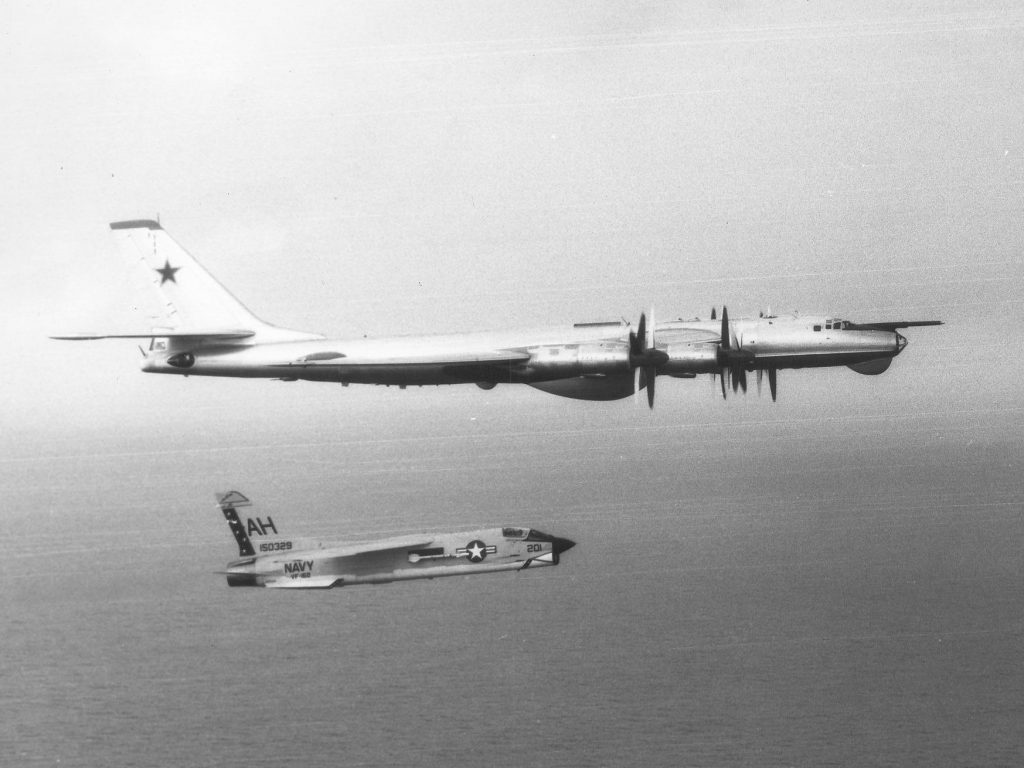It’s been a while since I have done a post on the Beautiful Destroyers – the ironic observation that some of the most beautiful aircraft ever built were made with the express purpose of breaking things belonging to other people.
Today, I would like to introduce you to the Vought F-8 Crusader.
The Crusader was a carrier-based air-superiority fighter designed in the mid-1950s, and used by the US Navy, the US Marine Corps, the French Navy and the Philippine Air Force. A real ‘hot ship’, she was the US Navy’s first real supersonic fighter; previous fighters could go supersonic in certain circumstances (usually a powered dive) but the Crusader could do it in level flight. The Crusader was also known as the ‘Last Gunfighter’ because she was fitted from the outset with four 20mm Colt cannon, in an era where fighter jet designers were moving away from gun-armed fighters and majoring on missile-armed interceptors.
In the Vietnam War, however (1965-1972) the ‘missile-only’ tactical doctrine was revealed as essentially flawed, as North Vietnamese MiG-17, MiG-19 and MiG-21 fighters, which were (in the case if the MiG-17s and MiG-19s) much older than the American fighters and indeed almost obsolete, were able to get ‘in close’ and use their guns, where the Americans couldn’t fire back. This was because not only were missiles quite unreliable in those days, but also they were not really designed to be launched from hard-manoeuvring aircraft at small, agile targets. They also had a ‘minimum range’ limitation and could not be launched if the target was too close – because they took time to arm themselves after launch.
For the Crusader, however, this was not a problem, because she already had her guns built-in. Indeed, so successful was the Crusader against the MiGs that the North Vietnamese pilots reportedly had far more respect for the Crusaders than any other American fighter.
It is also worth mentioning that, because of the lessons learned in Vietnam, the majority of today’s ultra-modern fighter aircraft, produced by all nations, now carry at least one internal gun.
So, what is it with the Crusader? Why do I find her so beautiful? Well, there’s the clean, sleek lines, the lovely wing shape, the huge air intake under the nose which suggests a belligerent, aggressive attitude, and to be honest she invokes in me a visceral ‘oomph’ sort of feeling whenever I see a picture one of these lovely aircraft.
And – she just ‘looks’ right! And as the old pilots’ adage goes, if an aeroplane looks right, she will fly right 🙂
She also has some interesting design features, particularly the ‘variable-incidence’ wing. The entire wing can be tilted ‘upwards’ so as to increase the lift capacity of the wing for slow-speed work, particularly when landing on aircraft carriers, which is what this plane is primarily designed for. In addition, since she’s a carrier-based aircraft, she has to be made tough and rugged; landing on an aircraft carrier is an entirely different concept from landing on a runway. I’ve described this in some detail in this article, but suffice it to say that an aeroplane rarely arrives on an aircraft carrier in a gentle manner 😉 The variable-incidence wing is visible in the ‘up’ position in this photo of an F-8 about to snag the arrester cables on its carrier’s landing deck*:
…and here’s a photo of a Crusader just about to undergo a steam catapult launch from its carrier:
The version above is the reconnaisance version of the Crusader, the RF-8; the difference is visible in the absence of the cannon muzzles and the addition of the side-facing camera apertures (the black rectangles on the fuselage of the aeroplane).
Earlier in this series, I posted an article on the Russian Tu-95 ‘Bear’ bomber, and pictures of various Western interceptors escorting them. The Crusader, of course, also routinely intercepted Bears, often performing reconnaisance over (or near) the aircraft carrier group. Here’s a US Navy F-8 shadowing a Bear:
…and then a lovely shot of a Bear flying right over the USS Oriskany, with its F-8 Crusader escort in attendance:
This sort of mission (for the Bears) would be primarily ELINT – Electronic Intelligence – the gathering of data on the other side’s electronic emissions, such as radar and communications. In those days, if you decided to fly near an American carrier group, you could guarantee that there would be a lot of radars looking at you, a fair bit of radio chatter, and you’d get some close-up photos of the aircraft that they sent up to take a look at you. And this sort of information would be priceless, should you ever need to fight a war against those people whose technology you are checking out. But the ‘defenders’ still need to send up interceptors, just to make sure that the visitors stay out of mischief 🙂
Here’s another shot of an RF-8 reconnaissance Crusader, showing off that lovely wing shape:
And finally, a monochrome shot of the prototype XF8U-1 Crusader, in 1955:
So there she is, the F-8 Crusader. In my opinion, one of the most beautiful of all the Beautiful Destroyers.
Header Picture Credit: Gaetan Marie
*Observant readers will notice that the Crusader in the carrier landing photo does not have its arrester hook extended. This means that the aeroplane will not stop on the deck; rather she will ‘bolter’, US Navy slang for doing a ‘touch-and-go’. The pilot will touch down on the deck, but will not snag a wire; instead, he will pile on the power and take off again. This sort of thing is done in order to practise approaches and landings, but without actually stopping, and it’s a very common practice also in land-based flight training at any level.
For more information on this beautiful aircraft, take a look here.
